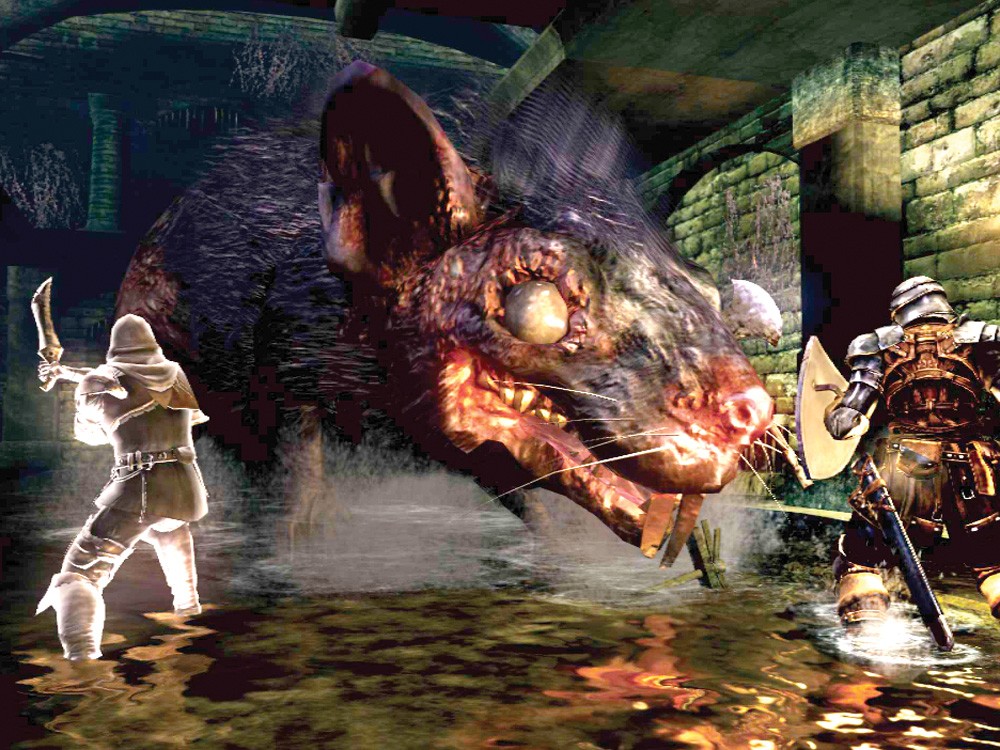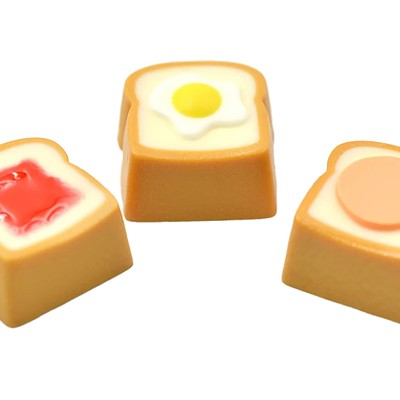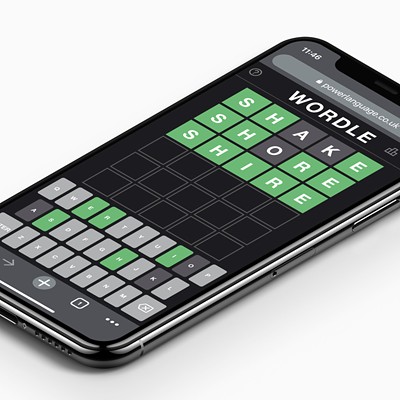Profanity flowed freely from my mouth while playing Dark Souls. Needless to say, I loved it.
One of the most satisfying trends in gaming during the past few years is the willingness of game designers to create truly tough games. The Monster Hunter series and Demon Souls (the spiritual predecessor to Dark Souls) have ushered in an era when games once again challenge players with honest difficulty.
Games like Dark Souls are not tough because players are lured into unsurvivable situations or forced to find their way through invariably lethal traps. And for the most part they don’t derive their difficulties from pitting weak characters against unstoppable computer-controlled monsters. Instead, they use current videogame technology to stage battles that have the slow, heavy difficulty of real life.
The knights and sorcerers in Dark Souls can’t whirl around at the touch of a button. They don’t switch swords in a split second. And they don’t swallow healing potions as quickly as whiskey shots. Everything my character in Dark Souls does takes time and effort. My knight clinks and clanks through the landscape, the plates of his armor rattling and visibly weighing him down. When he swings his mace, he’s thrown off balance — both he and his opponent are angled differently, standing in slightly different places when the next swings comes. Or my character may miss, but still have to follow through with the momentum of his mace as it swishes through empty air, giving his enemies the chance to attack.
Actually seeing and hearing these things brings them to life. It makes it possible to experience the thrill of medieval battle. It’s like using an Apple after computing in DOS for years — you can finally see what you’re doing. You don’t have to imagine it. Comparing this to the dumbed-down, streamlined combat of most hack-and-slash dungeon crawls, is like comparing college to kindergarten. Games like Dark Souls are an antidote to the “everybody wins” ethos that has infected American youth. “Not everybody wins,” they remind us. “Some people lose. Get used to it.” #&(*!
THE GOOD: The graphics and sound effects in Dark Souls are detailed and serious, just like the gameplay, and they help to immerse players in a believable world. Old stone steps are covered with moss so thick that they’re almost rounded. Stone pillars imperviously ring my sword when I whack them, but when a giant enemy swings his axe through them, they crumble like plaster. Water might not ripple realistically, but it sloshes and slows me down just like the real thing.
THE BAD: The intensity and realism of the game are undermined by advantages that the programming occasionally gives to my enemies and to me. Skeletons swing their swords through walls, while I can steer them so that they get caught alongside a simple staircase while I stand above them and bash their bones into pieces. Errors like this don’t happen often, and frankly, when they do they’re something of a relief from the game’s relentless difficulty. But they do make Dark Souls just another hack-and-slash for a moment or two.
THE BOTTOM LINE: Dark Souls is a bright example of serious fantasy combat.




















